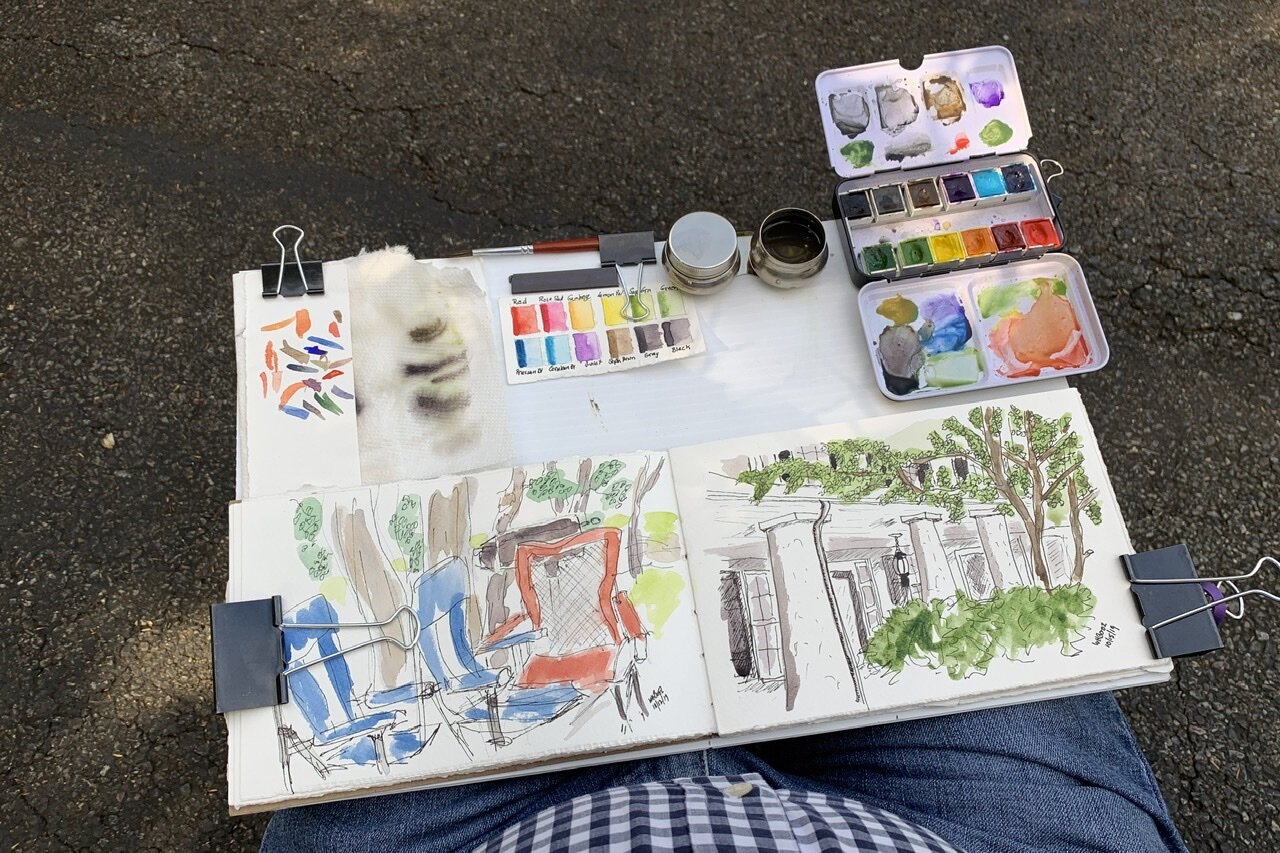Photographing Your Art
I take photos of my sketches and paintings. Sometimes I take several as I’m doing a sketch and/or drawing to document the progression or development of a piece. For paintings for which I want to have prints made for sharing or possible sale, I scan the paintings on my Canon 4400 flatbed scanner. But mostly I simply snap photos with my iPhone because I just want to share a completed sketch or painting on Facebook or Instagram.
The difficulty, though, with hand holding one’s smartphone over a piece of art is getting the smartphone level and parallel with the piece of art lying on the table below you. Another issue is proper lighting. Usually, if I take the photo next to a window during the day, I get enough light and the color accuracy is spot on. But getting a shot that’s not a bit off with the keystone effect - art piece is wider at one end than the other - is mostly a happy accident.
Solution? A tripod. I was looking for a solution that would be easy, cost me nothing, yet be flexible enough to be always set up and ready and easy to use. I could buy or build a copy stand (and did back in the 70s for projects I did) but I have several tripods. One of my tripods I actually purchased with the photographing of old photos and family documents in mind. It is a K&F Concept TM2534T tripod and what makes it unique is that the center post can be used vertically (normal) but also horizontally! And that feature makes possible to use it as copy stand substitute.
Using the tripod is easy once you adjust the center post to a horizontal position and attach a smartphone holder to the quick release plate. The advantage of using this tripod is that because the post holding the smartphone can be moved in and out, you can stand it next to a table and extend the “arm” further in over the table. This tripod, however, is pretty big with a wide leg span. So, not the best solution to leave set up in our sun room where I have my drawing table set up.
I do, though, have several very lightweight tripods intended for use with smartphones, compact cameras, or smaller, lightweight Mirrorless cameras. They don’t have the typical center post and the one I chose to try doesn’t have a standard release plate, but rather a 1/4-20 (standard size) on a piece that can be moved 180° to shoot in landscape or portrait orientation. I attached a smartphone holder to it, turned the attachment piece to the side (‘portrait’ orientation), inserted my iPhone 6S+, and pointed it down to the table. This works fine and the tripod takes up less floor space than the K&F Concept model. The only drawback is that you can’t move the camera (i.e., smartphone) further in over the table. The artwork you’re photographing has to be right at the edge of the table. So far, however, that has not been an issue.





